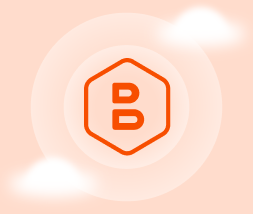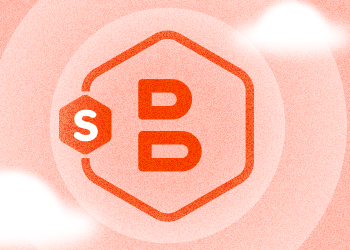In this guide, we will introduce the new backup format of CloudBerry Backup 7.0 and walk you through the main steps to creating a backup plan.
Once you’ve launched CloudBerry Backup, click “Try BETA” to switch to the new backup format, or else click “Use current backup format”. For the full list of CloudBerry Backup 7.0 supported features, check out this article.
Further reading CloudBerry Backup 7.0: Guide to New Backup Format

Selecting a Storage Account
This tab will show all your connected storage accounts. Choose one from the list, or press the "Add new Storage Account" button in the bottom right-hand corner to create a new one. Then click "Next" to proceed.

Backup Plan Name
This step requires you to set up a plan name for the backup. Specify the plan name by adding the required details as appropriate.
In the new backup format, we've removed the "Save backup plan configuration to the backup storage" checkbox; starting with CloudBerry Backup 7.0, this option is always enabled.
After you are done, press "Next".

Selecting Advanced Options
On this tab, the advanced options are selected automatically. We recommend keeping these settings.
In the new backup format, we've also removed the "Mark objects deleted in a backup source" option. After you have chosen the required settings for the file-level backup (screenshot 1) or image-based backup (screenshot 2), press “Next”.


Backup Source
In this step, you need to choose the source files you want to back up. To do this, select files and folders from the list. Click "Next" to proceed to the next step to customize features for the files which you need to back up.

Advanced Filters
Specify the advanced filters you need on this tab. To get full instructions on each of the advanced filters, click the question mark at the right-hand side, and click on the link that follows. Once finished, press “Next”.

On this tab, you can choose whether to compress and/or encrypt files in your backup to reduce the upload time, decrease storage space and protect your backup contents. CloudBerry Backup supports AES encryption with key sizes of 128, 192 and 256 bits.
In CloudBerry Backup 7.0, we've also added the opportunity to set up a password hint, which will be displayed in the event that you forget the password.

Restore Verification
In CloudBerry Backup 7.0, the restore verification for image-based backups can be run right after the backup is completed. It works as follows: choose the backup types on this tab and click the “Advanced settings” button to configure the frequency of screenshots to be taken. Please note that a Hyper-V role should be enabled prior to running restore verification, otherwise you will be required to install it. After the backup plan ends, you will see an additional plan with restore verification. Please, note that we don’t restore all data - we need several data blocks only to run a virtual machine and check it for integrity.
Restore verification can be configured from the backup plan or from the “Backup storage” tab. The first option is a process that implies running a virtual machine on Hyper-V, ensuring that the system is restorable, creating screenshots to prove it, and shutting the machine down automatically. The second option implies ensuring that a specific restore point is restorable. To do this, go to the “Backup storage” tab, choose the restore point you need to check and proceed with restore verification. Note that this is a one-time process.
Please, note that the restore verificaiton feature is disabled for AWS S3 Glacier and Glacier Deep Archive storage classes, since working with data in cold storage is charged additionally.

Consistency Check
We've also added a backup consistency check step to make a full consistency check option available. In the new backup format, it's enabled automatically, and we recommend keeping this option enabled to verify that no backup data is lost or modified, and all files needed for the restore point are presented in storage. All full backups and related incrementals will be checked, otherwise only the last generation will be examined. After you're done with this step, click "Next".

Backup Schedule
In this step, you can choose when the backup plan will be run. Select the "No schedule" option to run it manually, or select "Recurring" to set up a convenient schedule. Then click "Edit schedule", and you will see a pop-up window with recurring-schedule options.
Further reading Best Backup Schedules for Small Business
Please, note that this step has the same options both for the image-based and for file-level backups.
For instance, select the "Daily" type to run the backup plan from 1 to 7 times per week. Note that for this frequency you need to choose at least one day of the week in order to proceed to the next step. You can't skip or accidentally miss it, otherwise you will see another pop-up window with an alert.
Next, define the exact hour for the backup plan to occur once a day, or set up a backup plan sequence during the preferred hours.

Check the "Execute full backup" box and click the "Edit schedule" button to configure full backups for this backup plan.
Keep in mind that the start time chosen for the recurring-schedule settings will be leveraged for the full backup schedule automatically.
Select the "Run missed scheduled plan immediately when computer starts up" option to enable continuous uploading of data. From this moment, if a backup fails, data that has already been uploaded can be used on the next run. Upload resume is now available for all backup types.

Retention Policy
In CloudBerry Backup 7.0, the mechanics of the retention policy step have been simplified: either select "Do not Purge" so the backup is never deleted, or choose the time span for which the backups should be kept. After you specify the retention policy, press the “Next” button.

Backup Pre- and Post-Actions
On this tab, you can customize actions before and/or after the backup plan is completed. After you are done, click "Next".

Notifications and Logging Setup
Here you can choose whether you need to receive email notifications informing you about the backup process results, and maintain a system activity log, or not. Specify the settings and press "Next".

Backup Plan Summary
After you have specified the details of the backup plan, review the summary and, if necessary, go back to edit anything. Then click "Next" to finalize the backup plan creation process.

Finalizing Backup Creation
Previously, backup plans were located on the "Backup plan" tab but, in CloudBerry Backup 7.0, once the backup plan has been created, you can review all information about backups on the "Backup storage" tab.
To run the backup plan immediately, click the "Play" button in the bottom right-hand corner. On this tab, you can also edit the configuration of the backup plan selected and check the assigned date of the next run time.
That’s it. Now your backup plan is ready. If you have any further questions, feel free to ask us in the comments.





